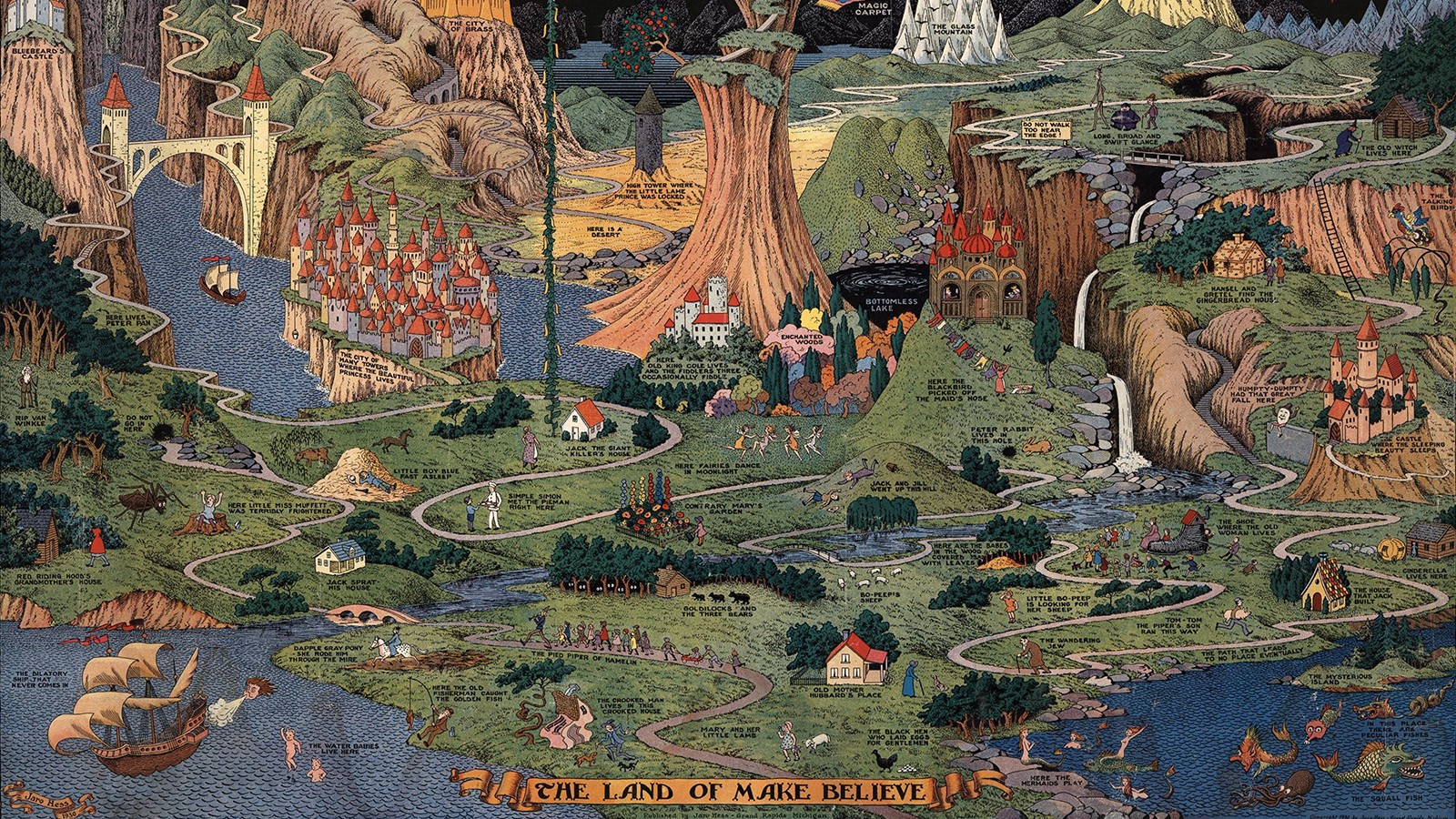We need More
Thomas More's 1516 work is considered the birth of the concept of euphoric living, but More wasn't first to examine an ideal society.
by Riccardo Coluccini

Some of the people who have heard about utopia, also know the frontispiece of the early sixteenth century edition of Thomas More’s Utopia, the book in which the term was first coined. It represents a graphic illustration of a place that is cut off from the rest of the world, at a faraway, foreign distance, and gives us a sense of the projection of utopia as something that cannot be realized within a large society. This visualization links utopia to the common usage of the word: something that is unattainable and unrealizable. However, as Gregory Claeys, professor of the history of political thought at Royal Holloway, University of London, and chair of the Utopian Studies Society, says, utopia originally referred to a kind of ideal society.
“The concept of utopia goes back to Sparta and Plato, and we can actually trace four different stages of evolution over the years,” says Claeys. “The first stage is the notion of an ideal society that initiated with Sparta, and was later taken up by Plato in a slightly different form, and was characterized by two crucial concepts: the equality of property among citizens and the contempt for luxury. In parallel, from the beginning of the Christian era, there are two fairly different conceptions: the idea of Eden, an original state described in Genesis, and the notion of Heaven, the perfect state of society that exists after death. Two different instances that face opposite directions: the former into the past, the latter directly into the future.”
The second stage occurs around the beginning of the sixteenth century, with the first peasant uprising led by Thomas Muntzer in 1525. This stage, as Claeys points out, “is usually described, in the works of German sociologist Karl Mannheim, as the first stage in which a utopian mentality oriented towards a more perfect society in the afterlife comes to be conceived as possible in this life.” Manheim calls this Orgiastic Chiliasm, and it means bringing down to earth the idea of a much more equal society, usually associated with Heaven as well as Eden. “Rather than waiting for the utopia to occur in a future world,” continues Claeys, “people begin to implement such a vision in this world.”
The third stage, then, is usually associated with the eighteenth century. “It is a shift from seeing utopia as something that happened once upon a time, for example in the golden age, to seeing it as a re-orientation of utopia towards the future,” explains Claeys. The German historian Reinhart Koselleck calls this the temporalization of utopia: an abstract ideal becomes temporal and real. “He also describes this as the morphing of utopia into the philosophy of history,” adds Claeys. In this way, we see history as doing one of two things: either potentially creating the ideal society — if the right conjecture of human beings and revolutionary spirits come into form — or automatically producing an ideal society, through a series of necessary progressive stages. As Claeys highlights, this stage is secularized in two revolutions which take place in the eighteenth century: the American Revolution against Britain, and the French Revolution.
The fourth stage, instead, is a kind of variation on the third one: utopia shifts from being something that once occurred in the past and we might try to recreate, to something that will only happen in the future and might be subject to human effort and agency — or even occur automatically. “This concept,” Claeys adds, “is closely linked in the nineteenth and twentieth centuries to the single most dominant concept of the whole of the modern period: the notion of progress. In this stage, the future is bright and every generation sees an increase in the standards of living, and utopia resides at the end of the curve of progress, which will go on indefinitely into the future.”

All these stages of the evolution of the concept of utopia share a common peculiarity: they are all rooted in our western cultural point of view. “The question of how universal across the entire world utopia is,” explains Claeys, “produces quite a bit of difficulty for scholars working in the field. If you define it relatively narrowly then it can be made to be essentially European; if you assume that is a much looser concept then it appears to have universal relevance.” In fact, there is one group that identifies the concept precisely with Thomas More’s coining of the term, considering the ideal society from a humanist and republican viewpoint. Therefore, this is mainly a European and Christian concept and while it has certain parallels elsewhere, it’s not universal.
A second group of scholars, instead, argues against this position and says that there are clearly generic ideas of the ideal society in virtually all cultures: “We can find them in Islam, in various earlier pre-Islamic African cultures, in Daoism, in Confucianism in China, in certain South-Asian traditions as well,” explains Claeys. In this case, we clearly see that the notion of the existence of an ideal society oriented around considerable greater equality does have a more universal following. From a literary point of view, this division is even more clear: the vast majority of utopian books are entirely unknown in the West, and for the most part, the western tradition that we attribute to More in 1516 is not diluted fundamentally by any other foreign or external sources. Western utopian literature is oriented towards its own history.
After the publication of More’s Utopia, there were waves of utopian writing, all of which were responses to domestic social crises of various kinds. We can consider two major phases before the middle- and late-twentieth centuries: the first is the controversy created by Edward Bellamy’s book Looking Backward which was published in 1888. Explains Claeys: “This is the first major reaction in the USA to the industrial revolution, and is preceded in Europe by a reaction to the industrial revolution by the early utopian socialist writers, such as Robert Owen, Henri de Saint-Simon, and Charles Fourier. A third group focused on the Bolshevik Revolution of 1917.”
Despite this vast and growing collection of utopian writings, visualizing the concept of utopia is more complicated. After the book frontispiece of More’s Utopia, illustrations from that time onwards are not as frequent as we might imagine. The reason is simple: it is a difficult topic to portray. Highlights Claeys: “There are a couple of related topics that often stand in for the representation of utopia, for example, the Greek idea of a golden age has been represented many times during the sixteenth and seventeenth centuries.”
The peasant utopia is a variation on the Greek ideal of the golden age, and it’s masterfully depicted in The Land of Cockaigne, a 1567 oil painting by Pieter Bruegel the Elder. Cockaigne was a mythical ‘Land of Plenty,’ and in the painting every kind of delicacy populates the scene: an egg wanders on its own legs and with a knife stuck down into its head, a roast chicken sits on a plate, a pig runs with a knife slicing its back. “There are many images of society where themes of abundance — most oriented towards eating and drinking, and celebrations — are central,” explains Claeys. This kind of celebration is integrated into the well-known tradition of Carnival, an updated version of the Roman festival of Saturnalia. In Saturnalia, a kind of ideal society became reality: a law reversal allowed slaves and masters to switch their obligations, overturning social norms, and returning to a world of equality.

In the nineteenth and twentieth centuries, instead, a different set of illustrations was produced by early socialists. “They produced novels and graphic images detailing plans of what their ideal community ought to look like,” explains Claeys, “with square buildings usually, some sort of industry steaming away in the countryside, and a kind of unity of vision of the best of modern industry and rural quasi-pastoral kind of golden age motif.” These illustrations led the way, in the middle- and late-nineteenth century, to a brand of utopias which were directly linked to science fiction. “From this time onwards we encounter a new vision of what a hyper-technological scientific-oriented future might come to look like,” adds Clayes, “most of these include flying machines, skyscrapers and the like.” This could be traced back to H.G. Wells, the greatest proponent of this vision, describing a modernistic variant of future-oriented utopia.
However, the notion of indefinite progress — particularly conceived of, in scientific, technological, and material terms, as an indefinite progression of nature’s exploitation — came to an end in the twenty-first century. “It comes crashing down within our own memory in the past 15 to 20 years,” warns Claeys. The climate crisis requires us to face a daring choice for our future. The worst-case scenario predicted by scientists in the ‘90s and early ‘00s turns out to be the scenario that we most likely should anticipate. With rising sea levels all over the world, widespread fires, migrants fleeing their home countries due to unforeseeable climate disasters, we live in a world soaked in dystopia. Thus, one must actively commit to utopian thinking to find a way out.
Claeys tries to embed the concept of utopia within the idea of utopianism, which includes three main components: ideology, literary fiction starting with More’s Utopia, and what he calls intentional communities — groups of people who would come together to try to live according to ideals that are linked to the concept of utopia. “These three components are linked around a concept which is kind of a form of solidarity or association or friendship,” explains Claeys, “I call it enhanced sociability, meaning a greater, closer form of sociability that is generally a standard in those societies created by the author of utopias, or those who attempted to create one.”
Utopian thinking now has more than an environmental prospect to analyze and deal with. According to Claeys, besides the climate crisis there are two more sets of dystopias that are going to converge in the twenty-first century: Dystopia of AI and tech surveillance, as in the use of face recognition technology in China, and dystopias that result in the concentration of wealth and power in the hands of billionaires. The danger here is that the underlying sense of nervousness and hopelessness about the future morphs into something like hysteria: People don’t see an alternative and don’t see practical measures put in place.
Utopian thinking comes in to provide a way to support us both psychologically and concretely. “It offers a kind of map for us so that, rather than simply expecting the future to grow out of it, we have some possibility to say there are very alternative courses that we can take: Do we want this future or that one?” says Claeys. “It’s a way of envisioning projections out of the present, some of course completely fantastic and unrealistic, others much more oriented towards looking at realistic trends within the present and seeing how they might pan out in the next 50, 60, or 100 years.” Utopian thinking is a realistic way of analyzing various types of futures and it becomes crucial, more than ever, in our current times. As the famous speculative fiction author Ursula K. Le Guin wrote in one of her essays, we should consider utopian thinking close to the conceptual term used by the Swampy Cree, a division of the Cree Nation occupying lands in Canada, to describe the thought of a porcupine as he backs into a rock crevice: “Usà puyew usu wapiw! He goes backward, looks forward.” To envision an inhabitable future, we should find our roots.


